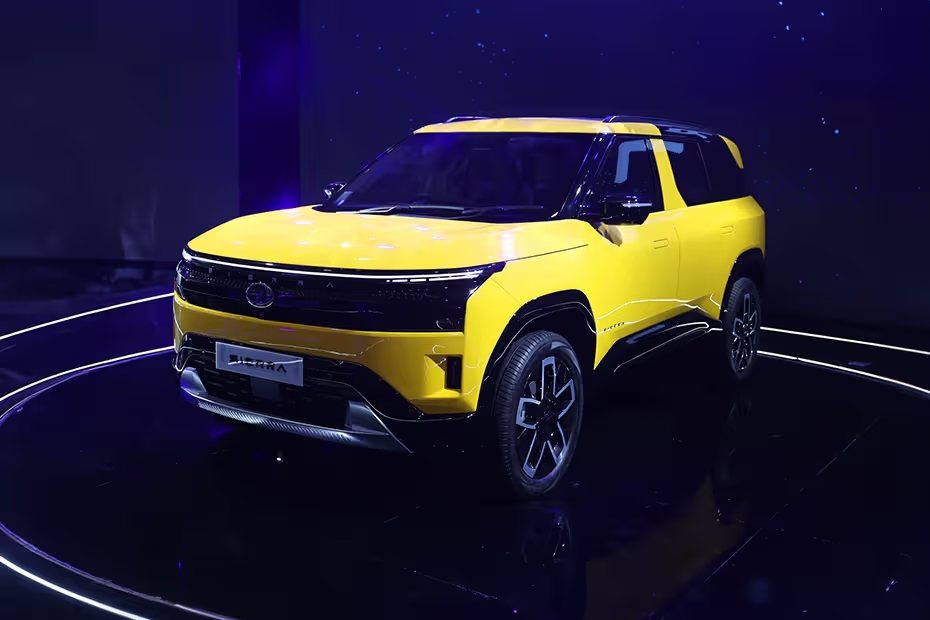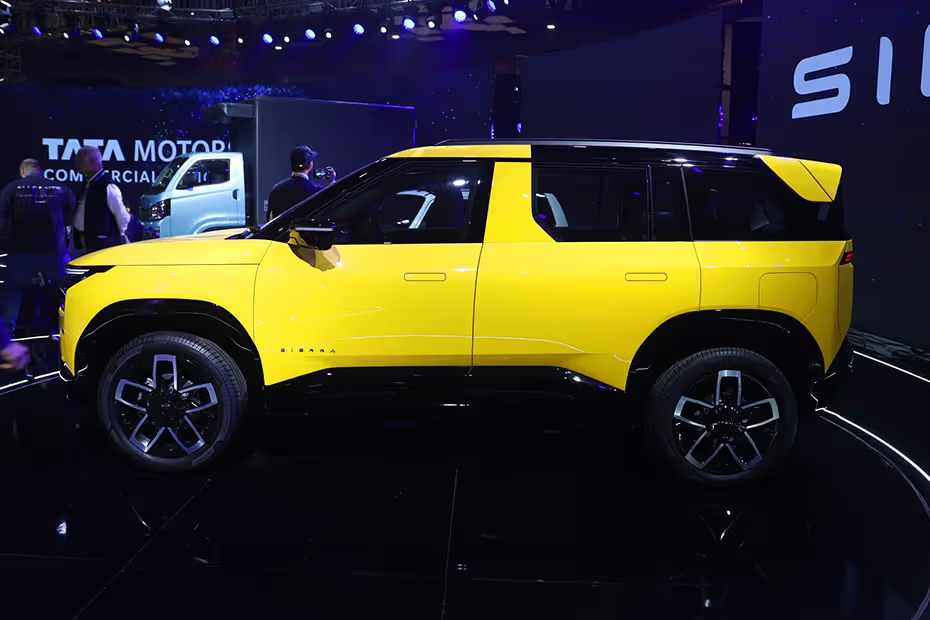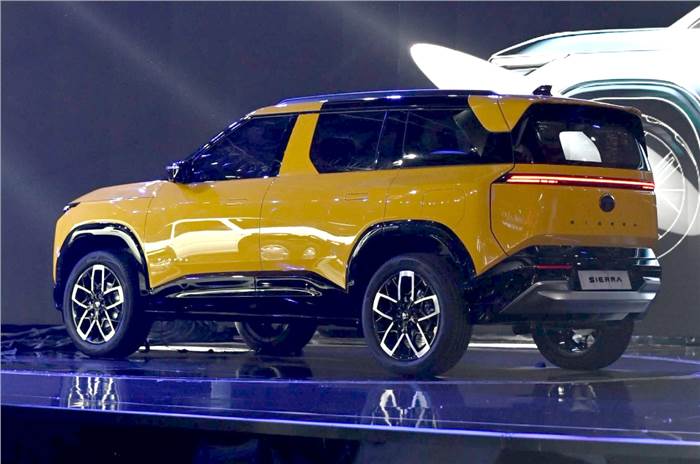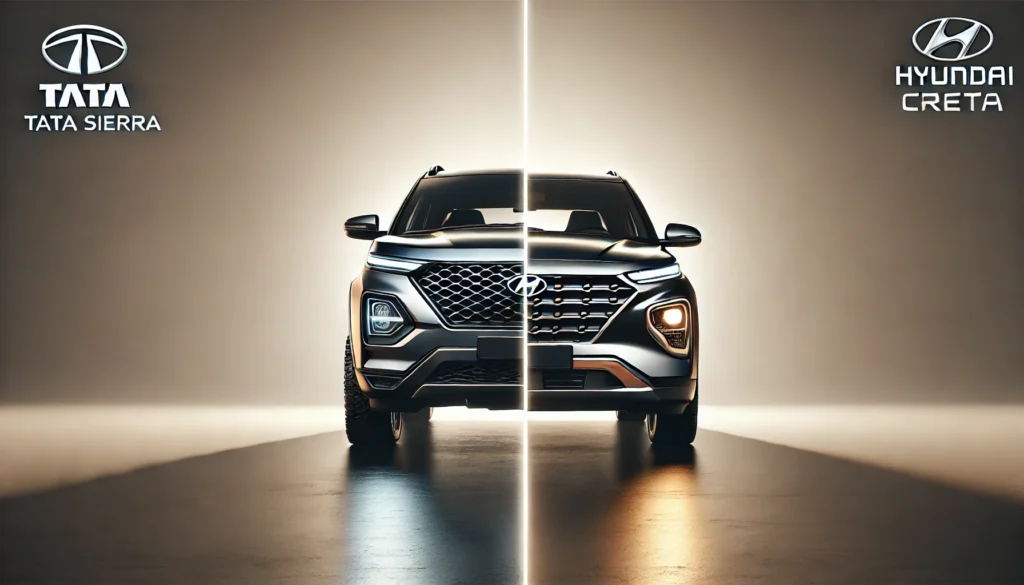Tata Sierra ICE: A Rebirth of an Iconic SUV
For the first time ever, Tata Motors has showcased the reborn Sierra in its ICE (Internal Combustion Engine) avatar at the ongoing Auto Expo 2025. This marks a significant milestone as the carmaker reveals the much-anticipated design of the ICE version. The iconic Sierra nameplate is set to make a comeback later this year, with the electric version expected to launch first, followed by the ICE model. If you’re eager to dive into the details, don’t miss the Sierra ICE concept in our in-depth image gallery.

Bold Design Language Meets Heritage
The Tata Sierra ICE concept flaunts a rugged and butch front fascia, exuding a strong road presence. Modern touches from its electric counterpart, such as the connected LED DRLs, are retained. However, as an ICE model, it features a distinct grille and a chunky bumper, giving the SUV a commanding personality.
From the side, the Sierra ICE showcases a classic upright silhouette reminiscent of the original, complemented by robust body cladding for a rugged appeal. The iconic rectangular rear quarter window makes a reappearance, albeit in a split format, while the multi-spoke alloy wheels add a touch of individuality to the ICE version.
At the rear, the Sierra embraces a minimalist design philosophy with sleek, full-width LED tail lamps. The gloss black rear bumper, accented by a silver skid plate, rounds off the design with a premium touch.

A Futuristic Yet Practical Cabin
Step inside, and the Tata Sierra ICE cabin feels like a leap into the future. The highlight is undoubtedly the massive triple-screen setup, seamlessly integrated into a single panel that spans the width of the dashboard. Contrasting yellow highlights and sleek AC vents add sophistication, while the familiar four-spoke steering wheel with an illuminated Tata logo ties it all together.
Moving to the rear, the Sierra offers a bench seat layout featuring three adjustable headrests and a center armrest. This combination ensures comfort and practicality for passengers, making it ideal for families or long road trips.
Loaded with Features
As with most Tata cars, the Sierra is expected to pack a punch when it comes to features. Anticipated highlights include the expansive triple screens, dual-zone climate control, a wireless phone charger, a JBL sound system, powered front seats with ventilation, ambient lighting, and a panoramic sunroof.
Passenger safety is also a priority, with up to seven airbags, ABS with EBD, 360-degree cameras, electronic stability control, front and rear parking sensors, ISOFIX child-seat mounts, and Level-2 ADAS (Advanced Driver Assistance Systems) likely to be offered.

Expected Powertrain Options
While Tata Motors has yet to disclose technical specifications, the Sierra is rumored to feature a 1.5-liter T-GDI turbo-petrol engine producing 170 PS, offering a spirited performance. Additionally, diesel and electric powertrain options are expected, giving customers the flexibility to choose based on their needs and preferences.
Price and Competitors
The Tata Sierra is expected to launch with a starting price of around ₹11 lakh (ex-showroom), positioning it in the highly competitive compact SUV segment. It will go up against popular rivals such as the Hyundai Creta, Kia Seltos, Skoda Kushaq, VW Taigun, Maruti Grand Vitara, Honda Elevate, and MG Astor.

Here’s a detailed comparison table between the Tata Sierra and the Hyundai Creta based on their expected features and specifications:
| Category | Tata Sierra | Hyundai Creta |
|---|---|---|
| Engine Options | 1.5L T-GDI turbo-petrol engine (170 PS, expected) Diesel and electric options expected |
Strong engine tuned for optimal power and torque Multiple powertrain options (Petrol/Diesel/Hybrid) |
| Safety Features | Up to 7 airbags, ABS with EBD, 360-degree camera, ESC, ISOFIX, Level-2 ADAS | 6 airbags, ABS, robust high-strength steel structure, ESC, ISOFIX, auto-crash notification |
| Infotainment | Triple-screen dashboard display JBL sound system |
10.25-inch touchscreen infotainment Bose Premium Sound system |
| Comfort Features | Panoramic sunroof, dual-zone climate control, ventilated seats, ambient lighting | Automatic climate control, wireless phone charger, power steering |
| Connected Car Tech | Yet to be confirmed | Hyundai Bluelink: Proactive alerts, remote control, auto-crash notifications |
| Exterior Design | Rugged and upright SUV look Connected LED DRLs, multi-spoke alloys, body cladding |
Sleek and modern design Signature LED DRLs, diamond-cut alloy wheels |
| Seating and Cabin | Bench seat layout with adjustable headrests Premium yellow accents, seamless triple-screen dashboard |
Premium seating, spacious cabin, leather upholstery (on higher variants) |
| Safety Systems | Level-2 ADAS features (adaptive cruise, lane-keep assist, etc.) Front/rear parking sensors |
Standard safety systems like ABS, ESC, and advanced body structure for crash safety |
| Sound System | JBL premium audio | Bose Premium Sound system |
| Expected Price | ₹11 lakh+ (ex-showroom, estimated) | ₹10.87 lakh to ₹19.20 lakh (ex-showroom, depending on variant) |
| Rivals in Segment | Competes with Hyundai Creta, Kia Seltos, Skoda Kushaq, etc. | Competes with Tata Sierra, Kia Seltos, Skoda Kushaq, VW Taigun, and MG Astor |
Key Takeaways:
- Tata Sierra leans towards rugged styling and modern innovation with features like a triple-screen dashboard, a panoramic sunroof, and Level-2 ADAS, making it ideal for tech-savvy buyers and adventure enthusiasts.
- Hyundai Creta, on the other hand, offers a proven package with robust performance, Hyundai Bluelink connected features, and premium sound systems, making it a great all-rounder for urban lifestyles.
Which one do you think suits your style better? 😊

